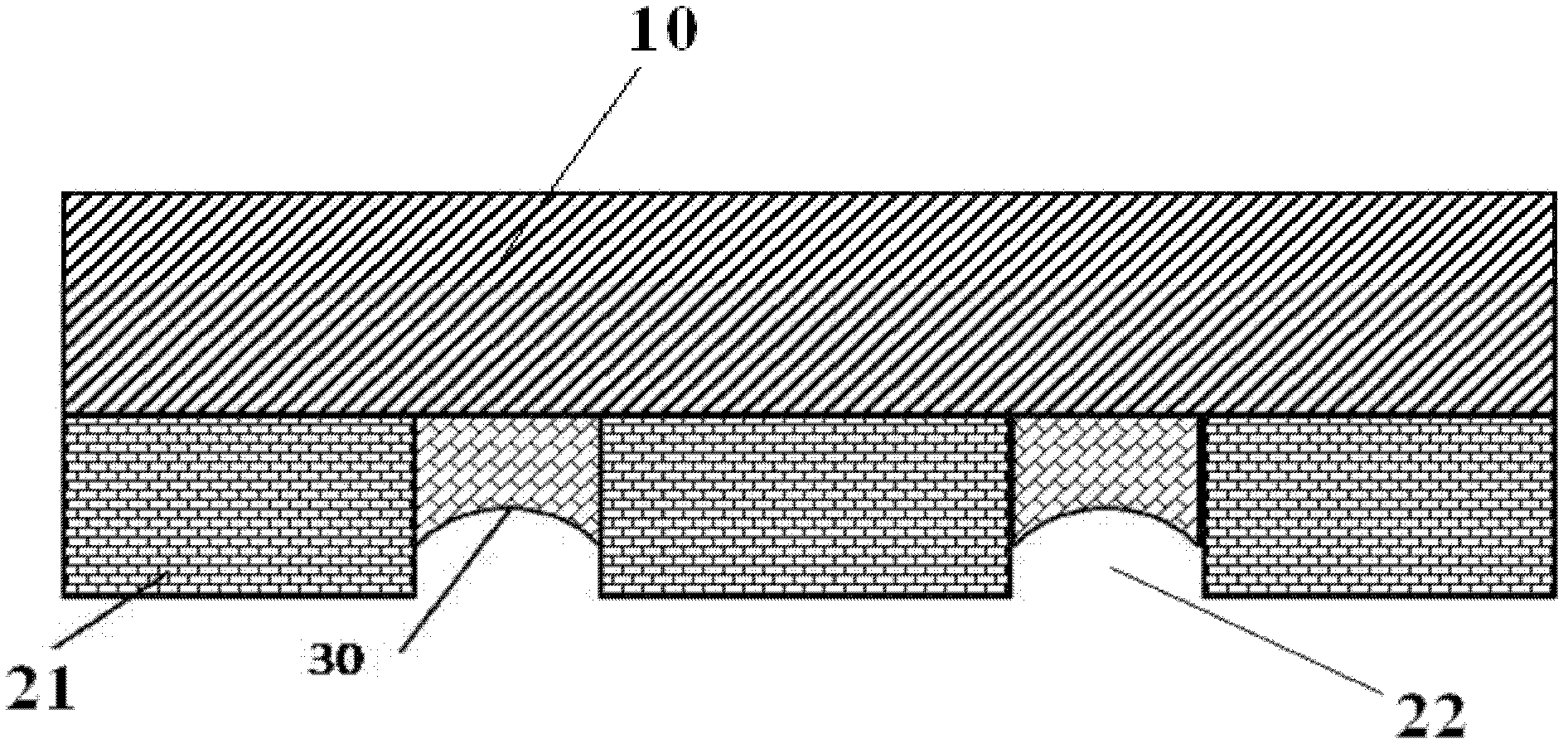Mixed bonding structure for three-dimension integration and bonding method for mixed bonding structure
A three-dimensional integration and hybrid bonding technology, which is applied in semiconductor/solid-state device components, semiconductor devices, electrical components, etc., can solve the problems of high pressure required for bonding, small interconnection pitch, damage, etc., and achieve compact structure , The process is convenient to operate, and the effect of avoiding open circuit and reliability problems
- Summary
- Abstract
- Description
- Claims
- Application Information
AI Technical Summary
Problems solved by technology
Method used
Image
Examples
Embodiment Construction
[0045] The present invention will be further described below in conjunction with specific drawings and embodiments.
[0046] like figure 1 and figure 2 Shown: in order to avoid the problem of disconnection and reliability caused in the existing bonding process, the present invention includes a first bonding body 1, and the first bonding body 1 includes a first substrate 10; the first substrate 10 is provided with a The first substrate 10 is electrically connected to the bonding interconnection metal, and the other end of the bonding interconnection metal corresponding to the first substrate 10 is indented to form a cavity 31, that is, a cavity 31 is formed corresponding to the bonding interconnection metal The end of the bump 31 forms a bump top edge 60, and the surface of the first substrate 10 corresponding to the bonding interconnection metal is covered with a first dielectric adhesion layer 20, which surrounds the bonding interconnection. The height of the first dielect...
PUM
 Login to View More
Login to View More Abstract
Description
Claims
Application Information
 Login to View More
Login to View More - R&D
- Intellectual Property
- Life Sciences
- Materials
- Tech Scout
- Unparalleled Data Quality
- Higher Quality Content
- 60% Fewer Hallucinations
Browse by: Latest US Patents, China's latest patents, Technical Efficacy Thesaurus, Application Domain, Technology Topic, Popular Technical Reports.
© 2025 PatSnap. All rights reserved.Legal|Privacy policy|Modern Slavery Act Transparency Statement|Sitemap|About US| Contact US: help@patsnap.com



